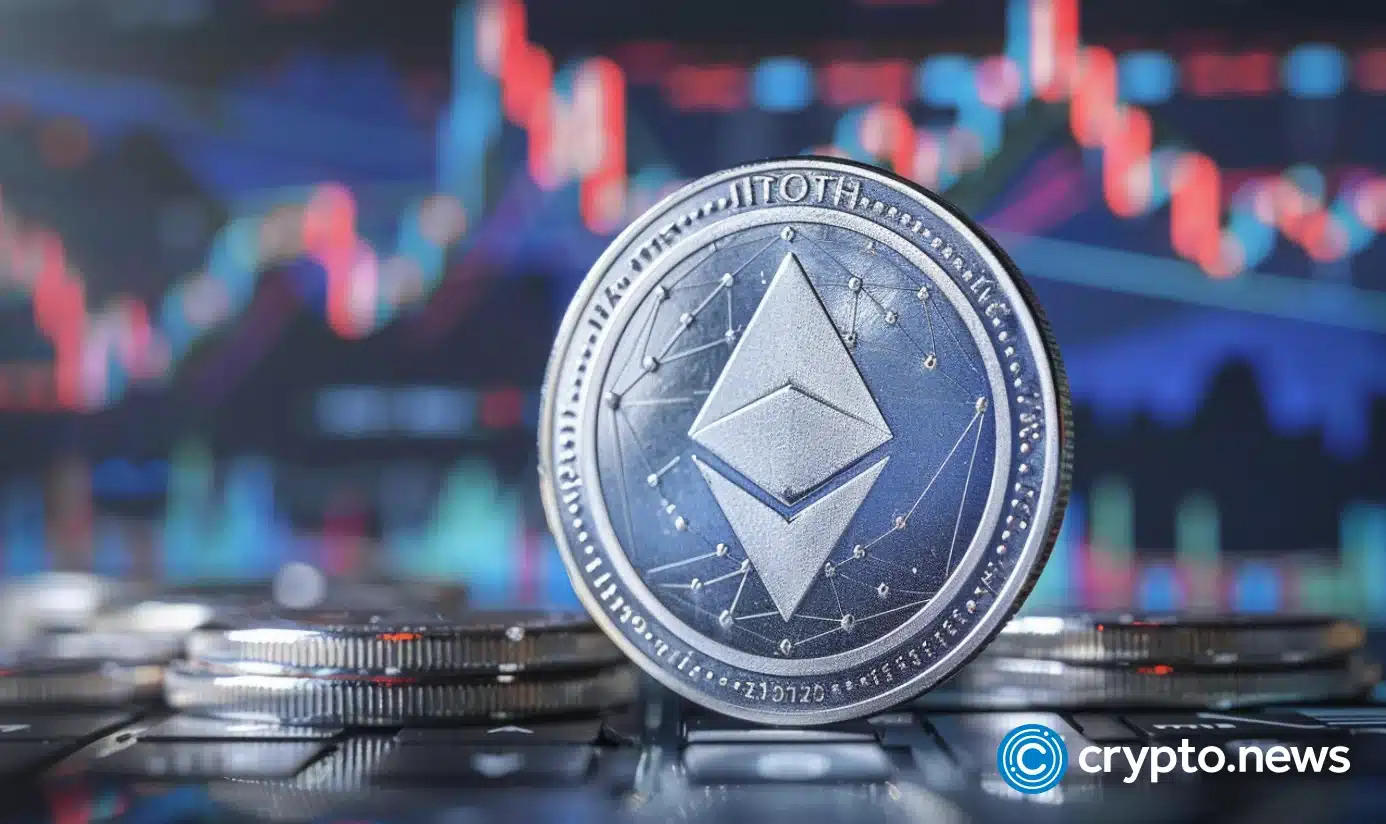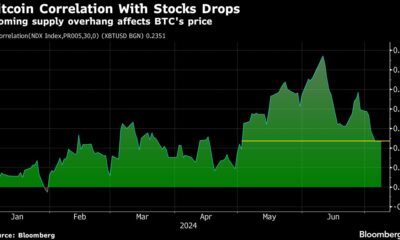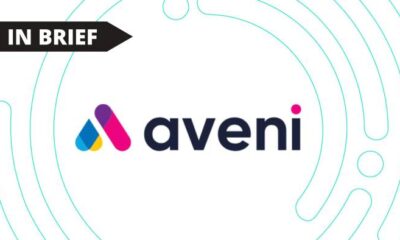Markets
Europe’s MiCA has finally arrived. How will the US respond?

On Sunday, the first wave of the European Union’s landmark sweeping law governing digital assets will come into force. With the framework for regulating crypto markets, Europe has managed to do what other jurisdictions, including the U.S., have so far failed to do: provide legal and regulatory clarity not for one part of the digital asset market, but for the entirety of it.
Catalyzed by the specter of Big Tech, such as Meta’s Diem (formerly Libra) initiative, entering financial markets, or by fears of runaway cryptocurrencies, the past five years have been marked by concerted policy developments in Europe. MiCA will have a profound effect on permanently connecting digital assets and the real economy, and doing so in a distinctively European way.
Dante Disparte is Circle’s chief strategy officer and head of global policy.
The opinions expressed in this column are those of the author and do not necessarily reflect those of CoinDesk, Inc. or its owners and affiliates.
In crypto’s first decade, much of the industry was characterized by a recurring and surprising boom-and-bust cycle that, in many ways, made this a uniquely American market. As a result, the US dollar is not just the price benchmark for digital assets (courtesy of the steady rise of stablecoins, which now exceed more than $150 billion)., but also the reserve currency of internet finance, much as it plays that role in the real world. MiCA aims to address this by giving euro-denominated stablecoins, which will be classified as electronic money tokens under new EU rules, a chance to succeed and a 441 million-strong consumer market.
While some aspects of MiCA are protectionist in nature, anchored in protecting European consumers and investors from the fraud and risks that have plagued rapidly evolving crypto markets, there is also a degree of economic and technological sovereignty at stake. This is most evident in the way offshore stablecoins – diplomatically referred to as global stablecoins – are inadmissible under MiCA. Stablecoins pegged to other currencies must primarily comply with the licensing requirements for electronic money in Europe, which would entail compliance with prudential, financial crime compliance and other rules. If the stablecoin issuer offers other crypto asset services, it must obtain a second license – either as a digital asset service provider (DASP), virtual asset service provider (VASP) or crypto asset service provider (CASP), depending on the jurisdiction. This requirement is a basic level of compliance for the safekeeping of digital assets. Beyond these licensing requirements, gone are the days of amorphous crypto companies with no substantial presence in the EU.
Indeed, MiCA is as much about job development and economic competitiveness as it is about consumer and market protection. Licensed entities must have responsible “mind and management” in an EU jurisdiction through which they can then pass their operations across the federation thanks to pan-European regulatory harmonization – although there is still some distance to go before national-level regulators ensure that MiCA enters into force smoothly across the common market.
For the crypto industry and its existential link to the banking sector, MiCA marks a profound change, for which only the most serious players are prepared. For example, in the resurgent stablecoin category, where the dollar is the reference currency, MiCA marks a proverbial fiscal cliff where unregulated or non-compliant tokens will eventually be delisted or their access will be heavily restricted by crypto exchanges. The reason is simple. Instead of treating stablecoins as a fringe financial product or just a poker chip in a crypto casino, MiCA brings stablecoins into line with the old e-money rules. Therefore, all stablecoins offered by EU crypto exchanges must comply with the rules for e-money tokens. This gives the token holder a right to redeem the underlying currency directly from the issuer, a way to reinforce collective responsibility and consumer protection across the interconnected value chain of digital assets – from wallet, to exchange, and ultimately to the issuer. Contrast this model with the amorphous standards or lack of prudential protections that protect against a run on the Terra Luna stablecoin in name alone. Had Terra Luna complied with the equivalent of electronic money in the US, which are state money transmission laws, consumers might have been better protected from collapse.
Under the prevailing EU model, all regulated stablecoins will now have a common regulatory floor, which will not only encourage competition but will ultimately lead to broader fungibility and interoperability in the EU market. Like all new comprehensive rules or regulations, MiCA is imperfect and in some places overly prescriptive, so much so that EU lawmakers are already contemplating MiCA 2.0, which would potentially fill certain gaps in the regime, such as non-fungible tokens (NFTs), decentralized finance, and other areas. While MiCA has now given clear rules to European crypto market participants, on the American side of the Atlantic, imperfect rules or a lack of federal regulations have allowed an industry to flourish. Should transatlantic technological disruption increase – or should the US and critical EU partners aspire to shared digital commons?
If U.S. policymakers adopt a competitive stance toward the EU on digital assets, a true “NAFTA for digital assets” could be envisaged across North America. A lasting alternative, however, would be to form a transcontinental Western alliance for digital assets that would enshrine shared democratic values in these emerging markets and how exponential technologies shape the future.
Now that the world has MiCA, it is time for the US to act and reaffirm its place as a global leader in financial services regulation and innovation.
Markets
Crypto Markets Rebound as Spot Bitcoin ETFs Attract Massive Inflows

This week saw $722 million worth of Bitcoin spot ETF inflows, including the largest daily inflow in a month.
Cryptocurrency markets rallied on Wednesday, driven by inflows into spot Bitcoin exchange-traded funds (ETFs).
The price of Bitcoin (BTC) is up 3% over the past 24 hours to last change hands at $65,200, according to CoinGecko. Ethereum (ETH) is up 2% and is trading at $3,471. Solana (SUN) and Polkadot (POINT) increased by 4%.
Bitcoin spot ETFs saw $422 million in daily inflows on Tuesday, the highest in the past 30 days, according to Far side data, . The all-time record for a single day was $1.05 billion on March 12.
Among Tuesday’s top contributors, BlackRock’s IBIT led with $260 million in inflows, followed by Fidelity’s FBTC with $61 million. This week has already seen more than $722 million in inflows.
Among the top 100 cryptocurrencies by market cap, Worldcoin (WLD) led with a 28% increase, followed by Helium (HNT) with 20% and Lido DAO (LDO) with 15%.
Worldcoin, a decentralized identity project led by OpenAI CEO Sam Altman, announced is extending the lockups for early investors and team members. This means that tokens will be gradually released through 2029, instead of the original 2027 plan. Token unlocks are generally seen as a negative because they increase supply and early investors can sell their tokens for profit.
Meanwhile, XRP, the token of the XRP Ledger network, jumped 8% after the CME and CF benchmarks introduced new indices and reference rates for XRP.
U.S. stocks faced a downturn on Wednesday. The S&P 500 fell 1%, while the Nasdaq Composite and Dow Jones Industrial Average both fell 2%.
Markets
Altcoins on the cusp of a major breakout – WLD, AR, and INJ prices could surge by 20% in the coming days

Crypto markets appear to have been taken over by the bulls as major tokens have surged above their crucial resistance zone. Bitcoin surged above $65,000 while Ethereum was above $3,500, and XRP, which had remained passive for quite some time, surged over 40% in the past few days to hit $0.6. The uptrend has been captured in most altcoins, with Worldcoin (WLD), Arweave (AR), and Injective (INJ) leading the rally. Here’s what to expect for these tokens in the coming days.
Worldcoin (WLD) Price Analysis
O Worldcoin Price has been trading inside a descending wedge since it marked a new ATH near $12 in the final days of Q1 2024. The recent price action helped the price break out of the upper resistance of the wedge, breaking above the crucial resistance zone between $2.21 and $2.39. Market sentiments have changed, but technicals suggest that the bulls may remain passive for a while, which could offer some room for a bearish pullback.
The price broke out of the wedge with a significant increase in volume, but the current volume suggests that the bulls have taken a step back. Meanwhile, the RSI is about to reach the upper boundary, which could attract bearish forces. Additionally, the DMI has undergone a bullish crossover, but the decline in the ADX suggests that the rally may remain consolidated above the gains. Therefore, the WLD price is expected to maintain a horizontal consolidation between $3 and $3.3 and trigger a fresh rally to $4.4 during the next bullish rally.
Arweave (AR) Price Analysis
Arweave formed a strong base around $25, which helped the rally trigger a recovery during the bearish attack. Mt. Gox and German terror forced the price to fall below $20. However, the recent price action has brought the altcoin within the bullish range and raised expectations of maintaining a decent uptrend for a few more days.
AR price has hit one of the major resistances around $30 to $31.5, which could act as a strong base once overcome. The buying volume is slowly increasing, which could keep the bullish hopes for the rally high. Moreover, the supertrend has just flashed a buy signal, indicating a clean reversal of the trend. Therefore, AR price seems primed to maintain a healthy uptrend and rally above $40. However, if the bulls maintain a similar trend, making new highs above $50 may not be a tedious task for the bulls.
Price Analysis of Injective (INJ)
Injective price has been showing sharp strength since the beginning of the year and hence, the recent turnaround is expected to revive a good uptrend going forward. The bears engulfed the rally to a large extent, but the recent price action suggests that the bulls have regained their dominance. Therefore, INJ price is expected to maintain a strong uptrend with a bearish interference on the way down.
INJ price has surged above the lower support zone and has registered consecutive bullish candles. Although the volume is below the required levels, the OBV is maintaining a sharp uptrend. Furthermore, the Ichimoku cloud lead span B is heading towards the lead span A and a healthy crossover indicates the start of a new uptrend. However, INJ price may be out of the bears’ reach once it secures the resistance zone between $30.77 and $32.12, which seems to be on the horizon.
Markets
Ethereum at $3.5K, Exchange Supply Hits 34-Month High

Ethereum (ETH) supply on exchanges has hit a 34-month high as the asset’s price surpassed the $3,500 mark.
ETH has risen 2.3% over the past 24 hours and is trading at $3,490 at the time of writing. The second-largest cryptocurrency — with a market cap of $419 billion — briefly touched an intraday high of $3,517 earlier today.
ETH Price, Whale Activity, RSI, and Exchange Supply – July 17 | Source: Santiment
Ethereum’s daily trading volume also increased by 7.6% to reach $19.8 billion.
According to data provided by Santiment, the supply of Ethereum on exchanges has reached $19.52 million ETH. This level was last seen in September 2021, when the asset was trading around the same price.
On the other hand, data from the market intelligence platform shows that the number of whale transactions has fallen by 12% in the last day — falling from 8,730 to 7,629 unique transactions per day.
The move shows that the supply of Ethereum on exchanges has been increasing with small deposits rather than large transactions from whales.
Additionally, the ETH Relative Strength Index (RSI) is currently hovering at the 60-mark, per Santiment. The indicator shows that Ethereum is slightly overbought at this price point, but it may not be in a critical position due to its large market cap.
One of the main drivers of Ethereum price increase is ETH spot expectations ETFs in the US Investment products are scheduled to start trading on July 23rd.
Markets
Bits + Beeps: How to Play the ‘Trump Trade’ in Cryptocurrencies After the Assassination Attempt

Also, how much will the Fed cut rates (and when)? What will be the inflows into ETH ETFs? And what is the near future for Bitcoin?
Posted on July 17, 2024 at 12:00 PM EST.
Listen to the episode at Apple Podcasts, Spotify, Capsules, Source, Podcast Addict, Pocket molds, Amazon Musicor on your favorite podcast platform.
In this episode of Bits + Bips, hosts James Seyffart, Alex Kruger and Joe McCann, joined by guest Jack Platts, dive into the market reaction to the recent assassination attempt on former President Donald Trump, analyzing how this event will influence the 2024 US presidential election and the cryptocurrency markets.
They also cover potential rate cuts: Could there be a cut in July? How big could the September rate cut be? Could the decision be influenced by the upcoming election?
They also give their predictions on what percentage of BTC ETF inflows the ETH ETFs will reach, and James talks about what he expects for Grayscale’s ETHE (hint: his outlook would be positive for ETH).
Finally, they delve into what’s next for Bitcoin as the German government runs out of BTC and Mt. Gox distributions begin. Just now?
Program Highlights:
- Whether Trump’s shooting decided the election and whether the event caused a “flight to safety”
- How election markets are becoming a place to watch election probabilities and whether cryptocurrencies “lean right”
- Whether rate cuts will occur in July or September and by how much they will cut: 25 bps or 50 bps
- How Joe sees the relationship between global liquidity cycles, rate cuts, and the potential rise of Bitcoin
- What are the new updates about Ethereum ETFs and their expected launch?
- Why Solana Hasn’t Performed Significantly Better Since Trump News
- What Market Breadth Indicates About the Current Market Rally and the Impact of Rates on Small Caps
- Everyone’s predictions on ETH ETF inflows and how much outflow we’ll see on Grayscale’s ETHE
- What’s Next for BTC After German Government Exits Bitcoin and Mt. Gox Giveaways Starting This Week
Hosts:
Guest:
- Jack PlattsCo-Founder and Managing Partner of Hypersphere Ventures
-

 DeFi12 months ago
DeFi12 months agoDeFi Technologies Appoints Andrew Forson to Board of Directors
-

 Fintech12 months ago
Fintech12 months agoUS Agencies Request Information on Bank-Fintech Dealings
-

 News1 year ago
News1 year agoBlock Investors Need More to Assess Crypto Unit’s Earnings Potential, Analysts Say — TradingView News
-

 DeFi12 months ago
DeFi12 months agoSwitchboard Revolutionizes DeFi with New Oracle Aggregator
-

 DeFi12 months ago
DeFi12 months agoIs Zypto Wallet a Reliable Choice for DeFi Users?
-

 News1 year ago
News1 year agoBitcoin and Technology Correlation Collapses Due to Excess Supply
-

 Fintech12 months ago
Fintech12 months agoWhat changes in financial regulation have impacted the development of financial technology?
-

 Fintech12 months ago
Fintech12 months agoScottish financial technology firm Aveni secures £11m to expand AI offering
-

 Fintech12 months ago
Fintech12 months agoScottish financial technology firm Aveni raises £11m to develop custom AI model for financial services
-

 News1 year ago
News1 year agoValueZone launches new tools to maximize earnings during the ongoing crypto summer
-

 Videos5 months ago
Videos5 months ago“Artificial intelligence is bringing us to a future that we may not survive” – Sco to Whitney Webb’s Waorting!
-

 DeFi1 year ago
DeFi1 year agoTON Network Surpasses $200M TVL, Boosted by Open League and DeFi Growth ⋆ ZyCrypto















